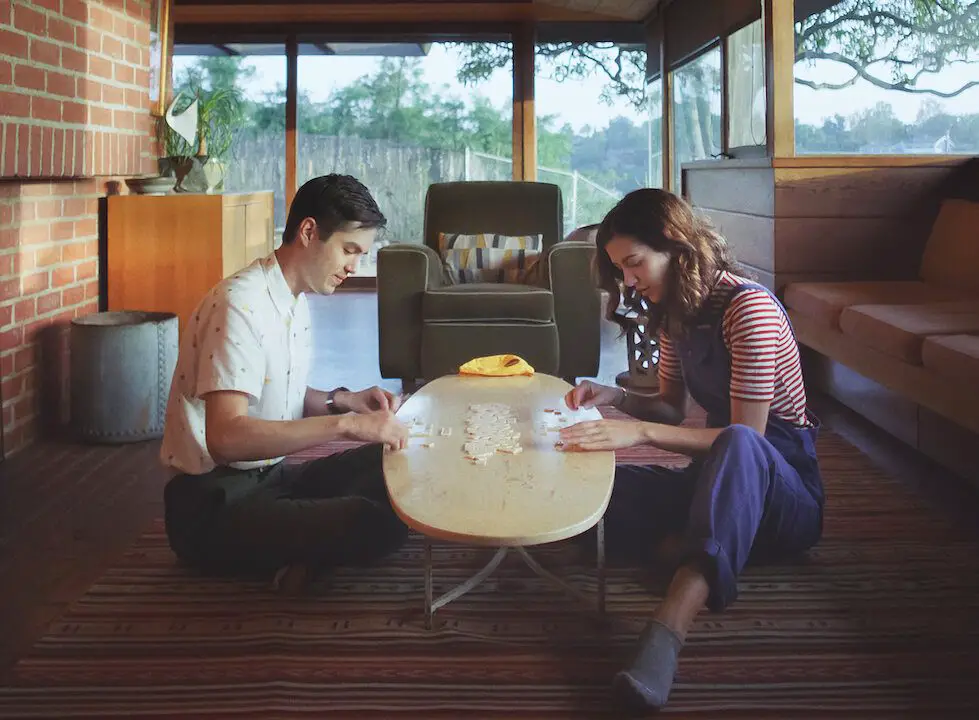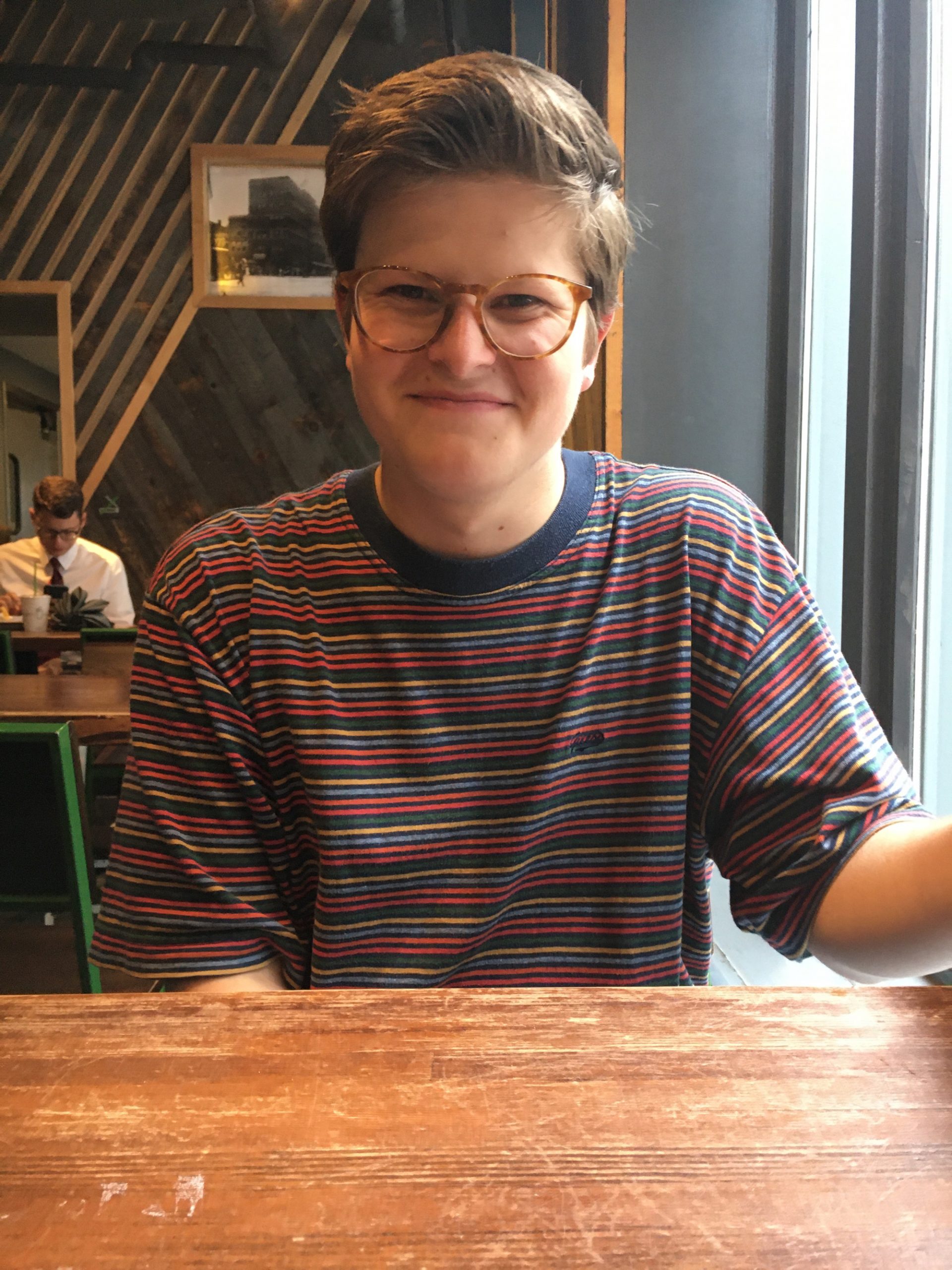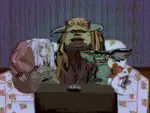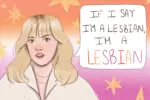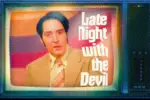The first frame in “Straight Up” depicts a plainly furnished living room, soft and unassuming. The white walls and couch command the screen with colorless authority, as if to indicate the sheer sterility lingering throughout the entire home. The space itself might indicate some degree of balance, but Todd, the occupant and protagonist, falls far from such a description.
Many romantic comedies adhere to a certain narrative formula, one that guarantees a satisfied audience and somewhat fulfilling plotline: woman meets man, the pair hits it off, a mild bump in the road causes tension, but they eventually work it out. James Sweeney’s “Straight Up” works within this rom-com canon and still manages to enliven the subgenre with a clever twist.
Rather than participate in the mundane “gay best friend” trope, better known as the “GBF,” Sweeney introduces the unconventional, yet acronymically similar “gay boyfriend.” A romantic relationship between a gay man and a straight woman seems like an oxymoron at first, but as the film progresses, Sweeney makes a cutting point that relationships are not solely dependent on sexual practices. When Todd meets Rory, a struggling actress in Los Angeles, the film not only complicates his own understanding of intimacy and love, but the viewers’ perception too.
“One can like ‘Gilmore Girls’ and be not gay,” Todd, who is obviously not straight, assures Rory upon their introduction. Here the film begins a pertinent conversation surrounding social performance, not in changing the way he speaks or acts towards Rory, but instead how he outwardly questions and reaffirms his own demeanor. He negates any suspicions of his queerness through addressing it directly; his interiority serves as groundwork for the entire narrative scope.
“I don’t explicitly label Todd as demiromantic or aesexual or anything… but as a filmmaker I was less interested in concretizing his sexual identity… than I was in exploring two very specific lonely souls who find intimacy and safety in each amid their respective journeys,” James Sweeney told Filmmaker Magazine.
Sweeney, who wrote, directed and starred in the film, works to dig deeper into the affective nature of certain social contexts, be it a couple’s costume party or a Thanksgiving meal with parents. For a questioning queer man specifically, Todd struggles to ignore those who attempt to undermine his sexual identity through inquiries of his intimate life. Friends always ask how he and Rory are in bed instead of inquiring who they are as a couple.
At times, it seems Todd’s greatest adversary is his obsessive-compulsive disorder. He says to his therapist, “If I didn’t have to worry about things going in and out of my holes, life would be so much easier.”
Both a software coder and professional house sitter, he views life with a statistical understanding and, as a result, curates a winding list of rational fears: flying, bodily fluids and dying alone being the most prominent. Most of the time, the incredibly low probability of these events outweighs his health and security.
While speaking with his therapist, Todd cites how classmates once teased him for his femininity and spat horrible slurs. He decides this ridicule stripped him of “the opportunity to explore the female gender.” Thus, now is the time do so.
Navigating a new lifestyle
Todd attempts to share his new heterosexuality with tact, as if it were a legal argument he has prepared to fortify with evidence. Regardless of where he rests on the Kinsey scale, or how pressed his button-down shirts might appear, his personal determination will surely overpower any daunting facts and figures. When announcing this shift to a heteronormative lifestyle, his two friends scoff at the decision.
“Girls aren’t gay blind anymore,” says Meg. “And you’re no Rock Hudson,” adds Ryder.
His aversion to sex drives his interest in keeping a straight partner, and while explicitly framed as comedic, it speaks to a larger concern around how queer people describe themselves in relation to sexual behavior.
“Culturally, we are a very sex-obsessed society. It’s plastered all over,” Sweeney said in an interview with The Advocate. “I think it’s easy to invalidate a sexless lifestyle as unfulfilling. And the more times we can normalize different [kinds of] humanity, then I think that’s always a good thing.”
The term homosexual denotes physical attraction to the same gender, but Todd’s struggle with intimacy outlines the multiplex nature of sex and identity. It begs an important question: What does it mean to describe oneself based on carnal desire? In an attempt to subvert this cultural understanding, Todd decides the best way to circumvent his crisis is through ignoring it completely.
Yet, instead of making it a detriment to his character, Sweeney steers the subject matter so that Todd’s sexual struggle leads the film as a powerful motive. The relationship he shares with Rory succeeds through its fluidity and poise, not in the bedroom. They might share a bed, but typical activities include late night reading or platonic backrubs.
When the couple chooses to write sex out of their relationship entirely, Todd’s father embroils himself in their decision by approaching it with pragmatism, underlining reproduction as a duty to the human race.
“You have a biological imperative to pass on those genes… [an] obligation to combat reverse Darwinism,” he emphasizes.
Intimacy then transforms into an arguably inescapable act, one that demands contribution. Those observant of Todd and Rory’s relationship attempt to work the couple down until they submit to these cultural expectations. They resist, for the most part.
“It’s not ironic, just unfortunate.”
By all means clever and cutting, the couple’s winding conversations seek to justify the unconventional nature of their relationship. Their quick wit, while enjoyable on its own, allows for the audience to understand how their dynamism holds up. Sweeney sews bleeding questions about irony throughout the film, namely how one defines the concept and what qualifies its use; Rory and Todd revisit the topic time and time again.
Though seemingly pedantic and frivolous, their intellectual squabbles work toward the film’s greatest irony: the relationship itself. They take their time when discussing Ernest Hemingway’s “Hills Like White Elephants” or facial symmetry, but consistently fail to acknowledge the true elephant in the room.
This slow burn is what makes the viewing experience so pleasurable and, by the end, Sweeney ensures the tension allays. “Straight Up” never quite untangles the relationship, but perhaps it shouldn’t be seamless and certain. The daunting intersections of sex and relationships never really are that simple anyway.


